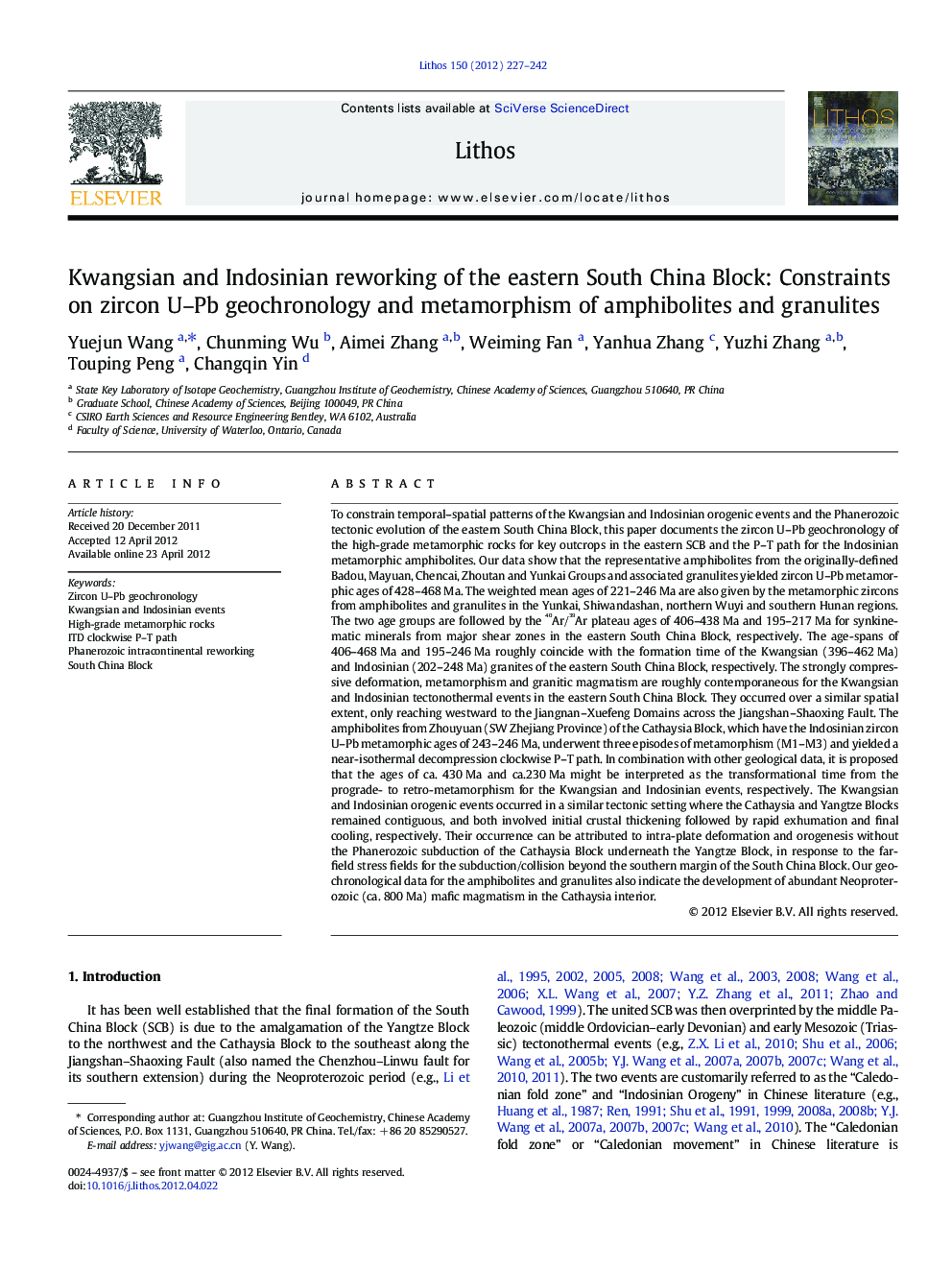| کد مقاله | کد نشریه | سال انتشار | مقاله انگلیسی | نسخه تمام متن |
|---|---|---|---|---|
| 4716499 | 1638703 | 2012 | 16 صفحه PDF | دانلود رایگان |

To constrain temporal–spatial patterns of the Kwangsian and Indosinian orogenic events and the Phanerozoic tectonic evolution of the eastern South China Block, this paper documents the zircon U–Pb geochronology of the high-grade metamorphic rocks for key outcrops in the eastern SCB and the P–T path for the Indosinian metamorphic amphibolites. Our data show that the representative amphibolites from the originally-defined Badou, Mayuan, Chencai, Zhoutan and Yunkai Groups and associated granulites yielded zircon U–Pb metamorphic ages of 428–468 Ma. The weighted mean ages of 221–246 Ma are also given by the metamorphic zircons from amphibolites and granulites in the Yunkai, Shiwandashan, northern Wuyi and southern Hunan regions. The two age groups are followed by the 40Ar/39Ar plateau ages of 406–438 Ma and 195–217 Ma for synkinematic minerals from major shear zones in the eastern South China Block, respectively. The age-spans of 406–468 Ma and 195–246 Ma roughly coincide with the formation time of the Kwangsian (396–462 Ma) and Indosinian (202–248 Ma) granites of the eastern South China Block, respectively. The strongly compressive deformation, metamorphism and granitic magmatism are roughly contemporaneous for the Kwangsian and Indosinian tectonothermal events in the eastern South China Block. They occurred over a similar spatial extent, only reaching westward to the Jiangnan–Xuefeng Domains across the Jiangshan–Shaoxing Fault. The amphibolites from Zhouyuan (SW Zhejiang Province) of the Cathaysia Block, which have the Indosinian zircon U–Pb metamorphic ages of 243–246 Ma, underwent three episodes of metamorphism (M1–M3) and yielded a near-isothermal decompression clockwise P–T path. In combination with other geological data, it is proposed that the ages of ca. 430 Ma and ca.230 Ma might be interpreted as the transformational time from the prograde- to retro-metamorphism for the Kwangsian and Indosinian events, respectively. The Kwangsian and Indosinian orogenic events occurred in a similar tectonic setting where the Cathaysia and Yangtze Blocks remained contiguous, and both involved initial crustal thickening followed by rapid exhumation and final cooling, respectively. Their occurrence can be attributed to intra-plate deformation and orogenesis without the Phanerozoic subduction of the Cathaysia Block underneath the Yangtze Block, in response to the far-field stress fields for the subduction/collision beyond the southern margin of the South China Block. Our geochronological data for the amphibolites and granulites also indicate the development of abundant Neoproterozoic (ca. 800 Ma) mafic magmatism in the Cathaysia interior.
► The amphibolite and granulite yielded zircon U–Pb metamorphic ages of 428–468 Ma and 221–246 Ma.
► The Kwangsian and Indosinian events of the SCB are limited at 396–462 and 202–248 Ma, respectively.
► The deformation, metamorphism and magmatism of two events occurred over a similar spatial extent.
► The Cathaysia and Yangtze Blocks remain contiguous during the Phanerozoic period.
Journal: Lithos - Volume 150, 1 October 2012, Pages 227–242